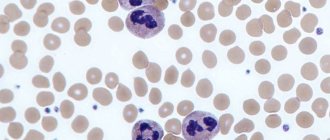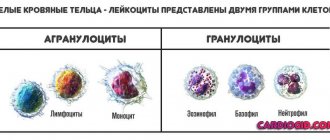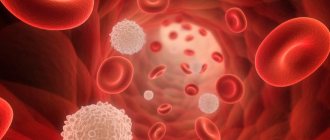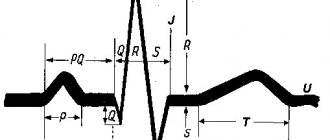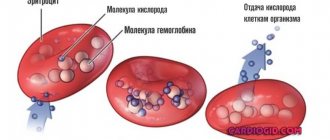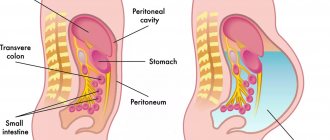The importance of neutrophils in the diagnosis of diseases
Cell characteristics
As mentioned above, neutrophils are a type of granulocytic leukocyte. They belong to this group of white blood cells, since they have granules in their composition, or rather in the cytoplasm. They contain various types of compounds: proteins, enzymes, and so on. They provide functions to neutrophilic leukocytes.
Role in the body
Neutrophils make up the majority of all leukocytes. Everyone knows that white blood cells protect our body. How does this happen?
When a foreign agent enters the body, substances are produced that attract neutrophils to the site of penetration. There, neutrophil leukocytes phagocytose, that is, absorb a foreign agent. The granules contained inside the neutrophil help digest the foreign compound.
The difference between neutrophils and other cells that can “eat” other molecules is their viability after phagocytosis. Neutrophils participate in phagocytosis once in their lives (after which they die), while other macrophages can do this many times.
Thus, this type of leukocyte is one of the first factors in the body’s defense against foreign agents.
Type of neutrophils
There are several types of leukocytes, differing in maturity. Initially, the maturation of this type of leukocyte begins in the same way as others - from a precursor cell. Then, during differentiation, a myeloblast is formed from it, then a promyelocyte. Already at this stage, granules begin to appear in the cells. Next, a myelocyte is formed, then a metamyelocyte. It is also called a young neutrophil.
Under some conditions, young neutrophilic leukocytes can be detected in the peripheral blood.
A band form is formed from the metamyelocyte. It is named after the shape of the kernel at this stage of maturation. The final, mature cell is the segmented neutrophil. It differs from its predecessor in the structure of the nucleus: segments are formed from the so-called rod, connected by constrictions.
Indications for referral for analysis
- Determination of neutrophil levels can be carried out as part of an annual preventive examination in children and adults. This is a way to identify hidden diseases that do not yet have clinical symptoms.
- A study of the leukocyte content is determined in order to determine whether there is an infectious process in the body. Perhaps this is the main indication for prescribing an analysis of the level of neutrophil leukocytes in the blood. That is, by analyzing the level of white blood cells, we can draw a conclusion about the body’s ability to resist infections. This is an important characteristic of children's health.
- One of the indications for studying the content of this type of cells is the diagnosis of malignant blood diseases. This may be evidenced by the detection of young and blast forms of neutrophils
- A conclusion about the effectiveness of treatment can also be made based on data on the level of neutrophils over time.
Exceeding the absolute number in a child
An increased level of neutrophil cells per unit volume of a child’s blood is called absolute neutrophilosis. Calculation of the increased absolute number of formed elements is necessary to identify the true picture of the disease. The leukogram reflects only the percentage of formed elements. An increased absolute content of neutrophils is observed in children suffering from:
- lobar or catarrhal pneumonia;
- relapsing fever;
- sore throat;
- cerebrospinal meningitis;
- diphtheria, scarlet fever;
- mumps;
- extensive bacterial damage to the body with purulent appendicitis, inflammation of the gallbladder, peritonitis.
Normally, absolute neutrophilia is found in newborns. An increased absolute number of neutrophil elements indicates an extensive infectious and inflammatory process of internal organs.
How is the level of neutrophils in the blood calculated?
To perform a neutrophil count, blood is required. Any one is suitable for this: taken from a vein or capillary. In newborns, blood may be taken from the heel. The study of the type of white blood cells is called leukocyte count. It is performed during a general clinical blood test (CBC).
This study is most often carried out using a microscope and a special cell counter. The specialist examines the blood smear and counts all the types of cells that he saw. Counts one hundred cells in a smear. Next, writes the result on the answer form.
Staining of smears is used to differentiate different cells from each other. The Romanowsky-Giemsa method is most often used for staining blood smears.
For heavy laboratory workloads, it is possible to count cells using an automatic hematology analyzer. But not all laboratories can be equipped with such devices. Which brings us back to the manual method and the value of experts in the field.
When neutrophils are elevated in children
The condition of increased neutrophil levels is called neutrophilia or neutrophilosis. Elevated values in a child may be associated with a reaction to a recent vaccination or the use of medications (steroid hormones).
Conscious toddler
The growth of neutrophilia is possible with the following pathology:
- bacterial infections (angina, inflammation of the middle ear, pneumonia, acute appendicitis, peritonitis, septic condition);
- the presence of pustules (abscesses, phlegmon);
- in case of severe skin burns;
- with hemolytic anemia;
- for acute and chronic leukemia.
Do you need any preparation for the analysis?
If the patient wants to get a reliable result of a blood test, then it is necessary to prepare. Moreover, the rules are very simple.
- Blood is donated on an empty stomach. Children under one year of age should not eat for 30–40 minutes before blood sampling. Older people – 3-4 hours.
- emotionally calm before donating blood .
- The level of physical activity also matters. Do not burden yourself or your child with training or sporting events. Even running down a hospital hallway can affect your results.
- There are situations where medications interfere with results . If the patient takes anything, the doctor should be notified so that he takes this into account when interpreting the study results.
Normal values of neutrophils in the blood in adults and children
Due to different methods for calculating the variety of white blood cells, there are different units of measurement: absolute and relative.
Relative values are the number of cells out of a hundred. Expressed as a percentage.
Absolute values - show a specific number of cells in a liter of blood.
The norms of neutrophils in the blood of adults and children are presented in Table 1.
Table 1. Reference values for neutrophil leukocytes.
| Age group | Absolute values | Relative values | |
| Rod | Segmented | ||
| Less than one year | 1.5 – 8.5 * 10*9/liter | 0,5 – 4 % | 15 – 45 % |
| One year – six years | 1.5 – 8.5 * 10*9/liter | 0,5 – 5 % | 25 – 60 % |
| From seven to twelve years | 1.8 – 8 * 10*9/liter | 0,5 – 5 % | 35 – 65 % |
| Over thirteen years of age Adults | 1.8 – 7.7 * 10*9/liter | 0,5 – 6 % | 47 – 72 % |
The most common causes of increased neutrophil levels in the blood
Band shift
There is such a thing as a shift of the leukocyte formula to the left. This means that the ratio between mature and young forms of neutrophil leukocytes changes towards an increase in the level of the latter.
The shift can be of varying degrees. The result of the analysis will depend on the increase in which forms the shift occurs: stab, juvenile, and so on.
The condition when neutrophils are increased in the blood of a child and an adult is called neutrophilosis.
Band neutrophils may be elevated in the following cases:
- infectious process in the body. Due to the lack of neutrophils, signals are sent to the bone marrow, where cell maturation occurs, to produce new “fighters”. Therefore, not fully matured cells enter the bloodstream;
- blood loss stimulates the bone marrow to synthesize all blood cells, not just leukocytes;
- after intense physical activity and stress;
- after operation;
- pregnancy.
Still, the main reason for the high number of these types of leukocytes is the inflammatory process, which they intensively fight.
With malignant pathologies, almost all forms of neutrophil maturation, including blast cells, can appear in the blood.
High level of segmented neutrophils
Segmented neutrophils are mature cells.
An increase in their number in the blood will be called a shift in the leukocyte formula to the right. There are a number of conditions when segmented neutrophils are elevated in the blood of children and adults. These include:
- deficiency of vitamins necessary for the maturation of new cells, for example, vitamin B12 and folic acid;
- increased background radiation in the surrounding area;
- lung diseases;
- liver pathology;
- kidney diseases;
- recent blood transfusion.
Increased neutrophils during pregnancy
An increase in the number of this type of white blood cells during pregnancy is considered normal. Since at this time everything in the body of the expectant mother is rebuilt and changes.
In response to the appearance of a half genetically foreign child in the body, the synthesis of leukocytes is stimulated. Therefore, their level can be increased. Next, there is constant monitoring of various indicators in a pregnant woman in order to notice deviations in time and have time to influence them.
During pregnancy, the mother's immune system decreases slightly, making the body more susceptible to various infections. An increased number of protective cells helps to avoid serious complications.
Principles of treatment
Neutrophilia is not an independent pathology, so there is no treatment for an increased number of cells.
First of all, the pediatrician determines what caused the deviation and prescribes a repeat examination. Often the main reason is non-compliance with the rules when donating blood. For example, the mother did not follow up, and the child ate before the analysis.
Also, if children have suffered an emotional shock before donating blood or are intensely preparing for sports competitions, there is no need to worry about the test result. Most likely, this is the factor that influenced the active production of neutrophils by the bone marrow. However, re-analysis is mandatory. In other cases, treatment methods depend directly on the disease:
- for diseases of an infectious nature, accompanied by high body temperature and purulent discharge, antibiotics are prescribed;
- for viruses - antiviral agents and measures aimed at increasing immunity;
- if the growth of neutrophils is affected by the baby’s unbalanced diet, menu correction is necessary, as well as taking vitamin complexes;
- for fungi - antimycotic medications;
- for bone marrow pathologies - drugs that inhibit the excessive production of these cells;
- if the cause is the use of certain medications, the course of treatment changes;
- in case of infarction of the brain, myocardium, lungs or kidneys - resuscitation measures.


